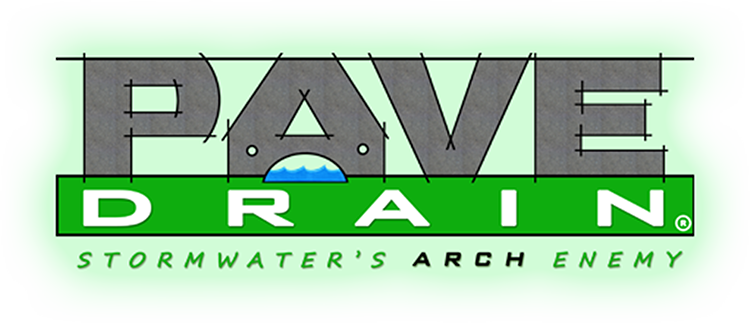The PaveDrain Difference
The PaveDrain System is a Permeable Articulating Concrete Block (P-ACB) that creates a performance pavement that integrates the patented arched reservoir to maximize on site stormwater capacity.
This improves the typical storm hydrograph and increases environmental performance while reducing stormwater infrastructure costs. The PaveDrain system can be designed in a variety of configurations customized for specific applications and installed very quickly with conventional construction equipment.
The PaveDrain System allows for a more natural (vertical) infiltration path, recharging local groundwater and reducing first flush pollutants. By reducing a typical storm hydrograph while also filtering out suspended sediments this combination of Best Management Practices (BMP's) illustrate stellar life-cycle cost savings, clearly making the PaveDrain System a superior choice for effective stormwater management.
The Clean Water Act
As part of the Clean Water Act, the U.S. EPA developed the National Pollution Discharge Elimination System (NPDES) to improve water quality by regulating point source pollution that discharges into water of the U.S. The vast majority of storm water drainage systems are considered to be point sources.
Additional Benefits
Up to 5 LEED Credits: Sustainable Sites; Credit 6.1, 6.2, 5.1, 5.7 & Materials & Resources: Credit 5.1.
Initial installations show a drastic reduction in the use of deicing salts over traditional asphalt and concrete surfaces.
Multiple installation methods to fit every job; Hand-placed, Machine Lay or as a Mattress in all types of weather for fast, economical installations.
Available in several color options.
No seams to catch on snow plows with either steel or rubber tipped blades.
Increased skid resistance over traditional pavements.
Solar Reflectance Index (SRI) range of 36 - 41 for lighter colored units.
Unlike traditional catch basins, varmints cannot enter drainage system.
Regional manufacturing supporting local economies.
Adaptable to small areas (retrofits) where retention ponds are outdated or not practical






